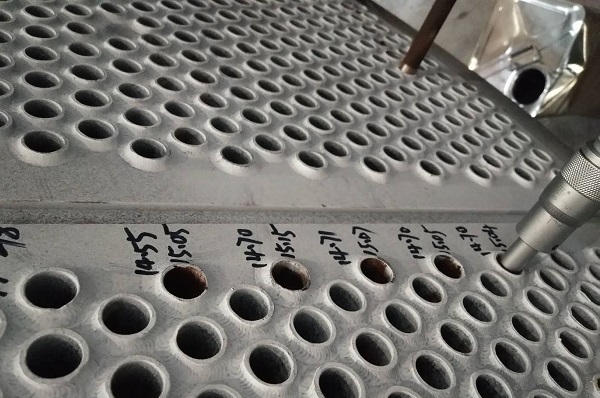Categories
- Technical & Application (25)
- Steel Tubing (20)
- Alloy Tubing (8)
Hydraulic tube expansion in heat exchangers is a method where tubes are expanded and sealed into a tubesheet by applying hydraulic pressure. This process can be divided into two main techniques:

Hydraulic tube expansion for a heat exchanger. The tubes are seamless cold-drawn low carbon steel tubes made to ASTM A179.
Hydraulic expansion has several advantages:

Hydraulic expansion of ASTM A213 TP316L seamless tubes to the tube sheet of a condenser.
This method is commonly compared with other expansion methods like explosive expansion, which is quicker for large exchangers, and roller expansion, which is slower and more suited for smaller operations. However, hydraulic expansion is valued for its precision, cleanliness, and the fact that it does not require as many cycles as other methods when dealing with thicker sheets or complex tube bundles.